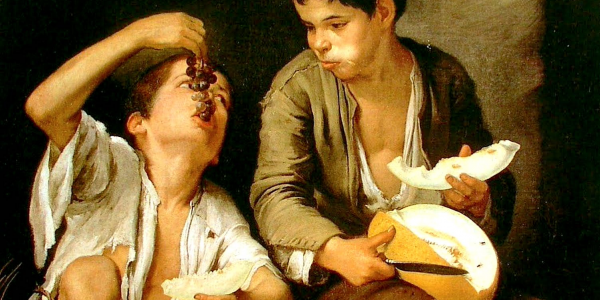
Murillo: a story of kindness and self-improvement
Murillo was one of the most outstanding painters of the 17th century in Spain. His work spans from religious topics to everyday scenes of Seville life, through portraits and landscapes. Its style is characterized by the use of vivid colors, the delicacy of the shapes and the expressiveness of the faces.
Murillo was born in Seville in 1617, to a humble family. He became an orphan at the age of ten and was trained as a painter with his brother-in-law Juan del Castillo, who taught him the techniques of Tenebrist naturalism. Later, he travelled to Madrid, where he met the work of Velázquez, which influenced him in his quest for light and realism.
Upon his return to Seville, Murillo mainly devoted himself to painting religious paintings for convent and churches. Among his most famous works of this period are the series of the life of the Virgin and of St. Francis of Assisi, which show his mastery in the treatment of fabrics, gestures and emotions.

Detail of "St. Francis embracing Christ on the Cross".
Despite the economic and social difficulties that the city was experiencing, Murillo managed to open his way into the art market and gain the favor of the most demanding customers. His style evolved from the first works of religious themes, with the influence of dark naturalism, to the last, more bright and colorful, with scenes of the popular life and of the childhood of Jesus and the Virgin. Among his most outstanding works are the pictorial series that he made for the convents of San Francisco and the Capuchins, the life cycle of Santa Maria la Blanca for the church of the same name, or the portraits of illustrious characters such as John of God or Nicholas Omazur.
Murillo was also a man committed to his time and to his city. He participated actively in the foundation of the Seville Academy of Fine Arts, where he served as president and professor. He also engaged in charity and charity, especially with poor and abandoned children. His generosity cost him his life, as he contracted a serious infection by falling from a staircase while painting a painting for the Hospital de la Caridad. He died in 1682, at the age of 64, leaving an incomparable artistic legacy and an indelible mark on the history of Seville.
In the 1660s, Murillo changed his style and oriented himself towards a more bright and colorful painting, with influences from Italian baroque and flamenco. His themes diversified and began to paint popular scenes, such as those known as "the children of Murillo", which represent poor children and beggars with great naturality and tenderness.

Detail of "Children eating Grapes and Melon".
Murillo was also an excellent portraitist, able to capture the personality and character of his models. Among his most famous portraits are those of his patron Nicolas Omazur, the bishop Ambrosio Ignacio Spínola and the sculptor Pedro Roldán.
Murillo died in 1682, after falling while painting a painting. His artistic legacy was enormous and had many followers and admirers, both in Spain and in the rest of Europe. His work is preserved in museums such as the Prado, the Louvre, the National Gallery or the Hermitage. If you want to know more information about Murillo and his work, technical features, data about Renaissance artists and, above all, information about the greatest works of art that houses the Prado Museum in Madrid, we recommend "The Prado Art Guide" already available on Amazon by clicking here.

